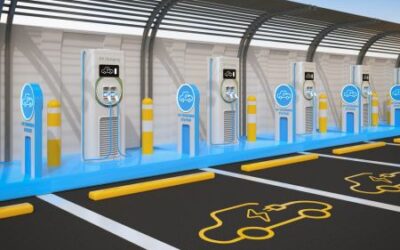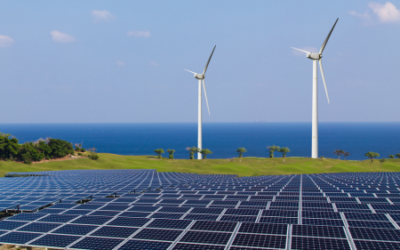The country’s electric grid was once called one of the greatest engineering achievements of the 20th century. Now, however, its three interconnected grids are decades old and the world has shifted. Billions of individual devices and population growth have increased demand exponentially. Technology advances with the potential to lower costs and ward off cyber dangers are critically needed. And, commitments to clean and renewable energy sources have become mandates. Big changes are inevitable.
Most of the systems in the U.S. were constructed in the 50s and 60s and they had a life expectancy of 50 years. Today, almost all operate at maximum capacity and they are all stretched to the limit. With population growth, spiraling demand, changes in power generation and mandates for the use of clean and renewable energy sources, change must come quickly.
Energy professionals throughout the country are looking for ways to increase capacity, provide storage, expand services and ensure security and sustainability. Those goals cannot be reached without collaboration from private-sector partners.
The increase in commitments to renewable energy, if nothing else, will push immediate change. California, New Mexico and Hawaii have passed legislation that mandates 100 percent renewable energy in the coming years. Chicago, Denver, Kansas City, Minneapolis and many other cities have similar commitments to renewable energy. Most power grids were not originally constructed for wind and solar options…that’s a problem that must be fixed.
Colleges and universities in the U.S. are also setting renewable energy goals. They want 100 percent of their power to come from renewable sources. The University of California System has launched initiatives to convert all its heating, cooling and other power requirements to electric by 2025. That’s because they intend to use renewable energy sources.
 In New York, a coalition has been formed to deliver half of the electricity required for each to renewable energy sources. The University of Buffalo, SUNY Buffalo State, SUNY Erie, the city of Buffalo and Erie County are collaborating to meet sustainability goals and the partners say that the savings realized will offset all upfront capital investment.
In New York, a coalition has been formed to deliver half of the electricity required for each to renewable energy sources. The University of Buffalo, SUNY Buffalo State, SUNY Erie, the city of Buffalo and Erie County are collaborating to meet sustainability goals and the partners say that the savings realized will offset all upfront capital investment.
In Massachusetts, the Depart of Energy Resources (DOER) is seeking partners to provide offshore wind power and storage. Procurement officials have announced an upcoming request for proposals (RFP) that should be posted soon. The selection of a private-sector partner is expected by November.
The Pennsylvania General Assembly is considering a bill to increase the state’s renewable energy by 30 percent. Another bill being considered would require the state Public Utility Commission to consider the benefits of a renewable energy storage program.
At the federal level of government, a bipartisan bill, the Energy Storage Tax and Deployment Act of 2019, establishes an investment tax credit for grid-connected energy storage systems used for residential power. Congressional sponsors say that the bill is intended to incentivize investment in storage for wind and solar energy.
All of this points to a large influx of new contracting opportunities for private-sector firms. Here are but a few to watch:
- New York Gov. Andrew Cuomo has announced that $30 million will be dedicated to projects that integrate renewable energy into the state’s electric grid. The state is tasked with producing 70 percent of its power needs with renewable energy by 2030. Potential private-sector partners are being asked to submit concept papers to the State Energy Research Division Authority. After applications are evaluated, a short-list of companies will be asked to submit full proposals. This process will continue until all funds are exhausted.
- Hawaiian Electric Company (HECO) supplies electricity to 95 percent of the state’s residents. HECO is expected to issue RFPs for renewable energy and storage soon. The move comes in response to new laws that require 100 percent reliance on renewable energy by 2045.
- The U.S. Department of Agriculture will invest $485 million through an electric loan program. The object is to upgrade rural electric systems and enable smart grid technologies. One already funded project will serve customers in the northeastern part of South Dakota and the southern part of North Dakota. The $24.8 million project will improve 360 miles of power lines.
- And, under the same loan program, the Heart of Texas Electric Co-op, which serves customers in Central Texas, will spend $31.25 million with a private-sector partner to build or improve transmission lines and launch smart grid technologies.
Renewable energy and clean power are among the hottest, most immediate priorities for cities, counties and states. Sustainability and clean air are the drivers and billions will be spent in meeting mandated energy-related benchmarks. One estimate of what will be spent to revamp, expand and repair the country’s system of grids over the next decade is as high as $5 trillion.
The foundation for an emerging and highly lucrative marketplace for companies with technology, construction and industry offerings has been laid.
SPI’s government contracting consultants assist firms of all types in selling to government. Contact them today.






